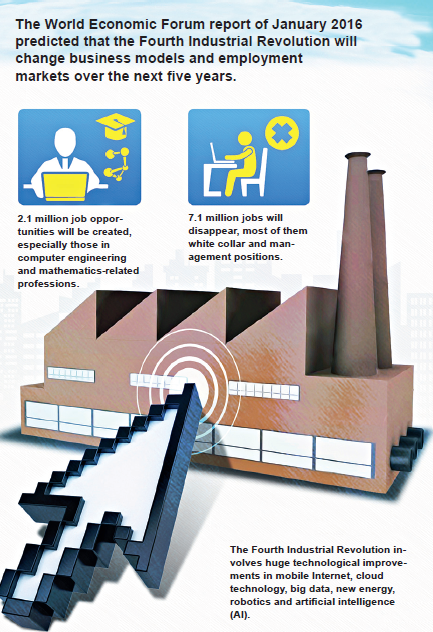Chinese Manufacturing Sector Rides Fourth Industrial Revolution Wave
China Today, June 20, 2017 Adjust font size:

If we look back to the first three industrial revolutions, whether it was when James Watt invented steam engines in 1775 or the electrical revolution in the late 19th century, China always fell behind and suffered from a backward economy. Although the computer revolution, which started in the 1950s, awakened the Chinese, we could only catch up from the “rear section of the train.”
In the era of the Fourth Industrial Revolution, however, China has the upper hand in the number of engineering professionals, market size, and momentum in economic growth. “Made in China 2025” aims to transform China from the so-called factory of the world into a high-end manufacturer. The 10-year action plan is expected to drive China’s economy to develop at a medium to high speed, and more importantly, to raise the country’s status in the global value chain.
Opportunities and Challenges for All
Justin Yifu Lin, professor and honorary dean of the National School of Development at Peking University, pointed out that “the Fourth Industrial Revolution will, like the previous three revolutions, expedite the development of productivity and materials, but also present challenges to individuals and the overall development of the economy, society, culture, and politics.”
If we were asked to give a nickname to the Fourth Industrial Revolution, Volvo Group’s Chief Sustainability Officer, Niklas Gustafsson, would call it a “Green Revolution,” while the President of Guangzhou Automobile Group Co., Zeng Qinghong, prefers to call it an “Artificial Intelligence Revolution.”
Against the backdrop of the new industrial revolution, the huge demand for intelligent manufacturing and low carbon development of intelligent technology will reform the modes of production and organization. Resource factors will be integrated, industrial chains reshuffled, and a new global industrial distribution formed in the wake of intelligent and green manufacturing.
“With the help of AI, nanotechnology, and robotic technologies,” Niklas Gustafsson said, “the Fourth Industrial Revolution will lead human beings toward sustainable development – for instance, to solve the problem of traffic congestion in green and creative ways.”
“Traditional manufacturing is now facing a great opportunity with intelligent manufacturing, but also some big challenges. Since the use of AI in automobile driving will lead to the decay of traditional industries, there is a risk of network security and competition between humans and AI,” Zeng Qinghong predicted. “Another big challenge is a reduction in job opportunities. In the next five years, approximately seven million jobs will disappear owing to the application of AI and automation. ”
Talking about the challenges new technology brings to traditional manufacturing, Niklas Gustafsson shared his thoughts. “Why do we carry out technology research? My understanding is because of connectivity. Humans play a leading role in society; therefore, robots and machines should all support people and link them together. In the future, we should link the economy, environment, society and people together in a sustainable way. And humans are definitely the key.”
It is imperative, therefore, to build an innovative system in which people are able to develop innovative thoughts, so as to cope with the upcoming challenges, and to work out solutions in a fast manner. This is sustainable development and also creates mutual opportunities and challenges for all nations in the world.